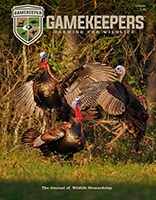The concept of “matching the hatch” isn’t just for fly anglers — it’s a crucial tactic for serious freshwater anglers targeting pressured fish or trophy species. In freshwater systems, fish are highly keyed in on regional forage species (like shad, bluegill, perch, or crayfish), and often won’t commit unless your bait closely mimics what they’re used to seeing and eating.
- Observe and Adapt: Watch what baitfish are being chased or stunned near the surface or ar5e in the gullet of recently caught fish. Pay attention to the shape, size, and swimming action. A 4″ shad swims differently than a juvenile bluegill or perch. Adjust lure profile and retrieve accordingly.
- Color Tuning: Use dyes, markers, or soft plastic dyes (like Spike-It) to add key visual triggers like blood spots, perch bars, or chartreuse tails. In clear water, natural and subtle is often better. In stained water, high-contrast colors mimic flash and stand out.
- Sound & Vibration: Swap rattle chambers or blade styles to better mimic local forage sounds (e.g., single Colorado blade for a thumping bluegill-like thud vs. double willow for high-speed shad imitation).
- Buoyancy & Action Adjustments: Use suspend dots or weight strips to change how your lure rises, falls, or glides — especially important for jerkbaits or crankbaits. Try using neutral-buoyancy setups to better mimic stunned or dying baitfish.
- Use hand-painted custom lures or modify factory ones with airbrush kits or nail polish to match local prey.
- Crawfish Matching: Note the time of year — spring craws are often more red/orange, while late-summer/early-fall craws turn olive and brown. Change trailer colors to reflect that.
● In heavily pressured waters, fish become conditioned to popular lure colors and shapes. Subtle adjustments in color hue or body profile can turn short strikes into committed hits — especially during tournaments or when targeting big, wary fish.or trophy species. In freshwater systems, fish are highly keyed in on regional forage species (like shad, bluegill, perch, or crayfish), and often won’t commit unless your bait closely mimics what they’re used to seeing and eating.
- Observe and Adapt: Watch what baitfish are being chased or stunned near the surface or ar5e in the gullet of recently caught fish. Pay attention to the shape, size, and swimming action. A 4″ shad swims differently than a juvenile bluegill or perch. Adjust lure profile and retrieve accordingly.
- Color Tuning: Use dyes, markers, or soft plastic dyes (like Spike-It) to add key visual triggers like blood spots, perch bars, or chartreuse tails. In clear water, natural and subtle is often better. In stained water, high-contrast colors mimic flash and stand out.
- Sound & Vibration: Swap rattle chambers or blade styles to better mimic local forage sounds (e.g., single Colorado blade for a thumping bluegill-like thud vs. double willow for high-speed shad imitation).
- Buoyancy & Action Adjustments: Use suspend dots or weight strips to change how your lure rises, falls, or glides — especially important for jerkbaits or crankbaits. Try using neutral-buoyancy setups to better mimic stunned or dying baitfish.
- Use hand-painted custom lures or modify factory ones with airbrush kits or nail polish to match local prey.
- Crawfish Matching: Note the time of year — spring craws are often more red/orange, while late-summer/early-fall craws turn olive and brown. Change trailer colors to reflect that.
● In heavily pressured waters, fish become conditioned to popular lure colors and shapes. Subtle adjustments in color hue or body profile can turn short strikes into committed hits — especially during tournaments or when targeting big, wary fish.
Join our weekly newsletter or subscribe to Gamekeepers Magazine.
Your source for information, equipment, know-how, deals and discounts to help you get the most from every hard-earned moment in the field.









